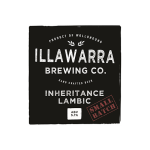Belgian Style Lambic
Belgian Style Lambics are gold to medium-amber.
Cloudiness is acceptable. Characteristic horsey, goaty, leathery and phenolic aromas evolved from Brettanomyces yeast are often present at moderate levels. High to very high fruity-ester aromas are present. Hop aroma is not perceived to very low, and can include cheesy or floral lavender-like character. Hop character is achieved by using stale and aged hops at low rates. Lambics are brewed with unmalted wheat and malted barley. Sweet malt characters are not perceived. Hop flavor is not perceived to very low. Hop bitterness is very low. Traditionally Lambics are unblended, naturally and spontaneously fermented, with high to very high levels of fruity esters, bacterial and yeast derived sourness, that sometimes but not necessarily includes acetic flavors. Characteristic horsey, goaty, leathery and phenolic flavors evolved from Brettanomyces yeast are often present at moderate levels. Some modern versions are fermented with the addition of cultured yeast and bacteria. Carbonation can range from very low to high. Vanillin and other wood-derived flavors should not be evident. Body is very low with dry mouthfeel. Lambics originating in the Brussels area are often simply called lambic. Versions of this beer style made outside of the Brussels area of Belgium cannot be called true lambics. These versions are said to be �Belgian Style Lambic� and may be made to resemble many of the beers of true origin. Historically, traditional lambic is dry and completely attenuated, exhibiting no residual sweetness either from malt, sugar or artificial sweeteners. Sweet versions may be created through addition of sugars or artificial sweeteners. Competition organizers may choose to subcategorize this style into A) Traditional and B) Sweet.
IBU (International Bitterness Unit)
Abv (Alcohol By Volume)
SRM (Standard Reference Method)
